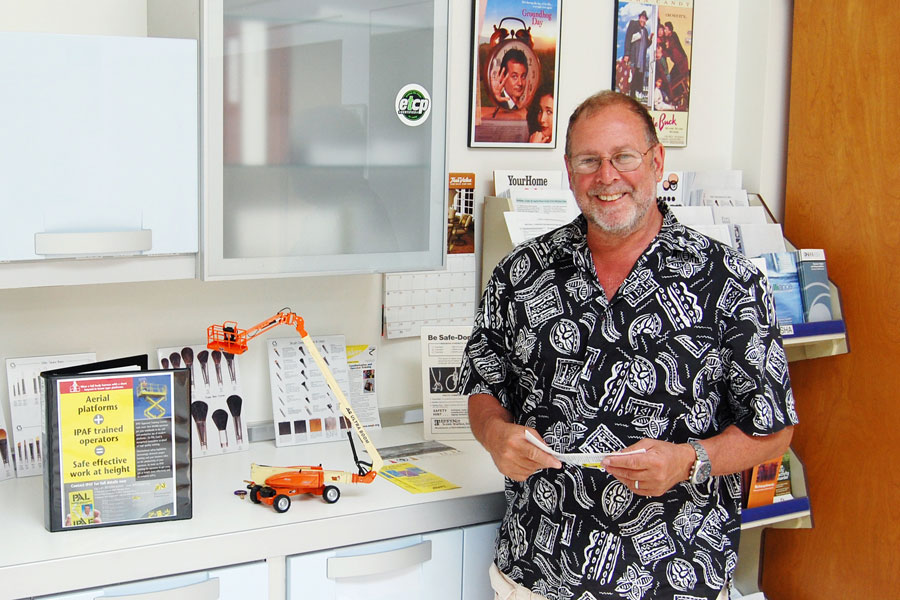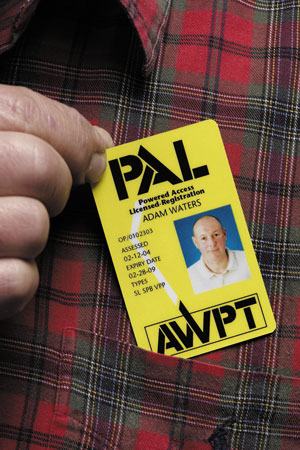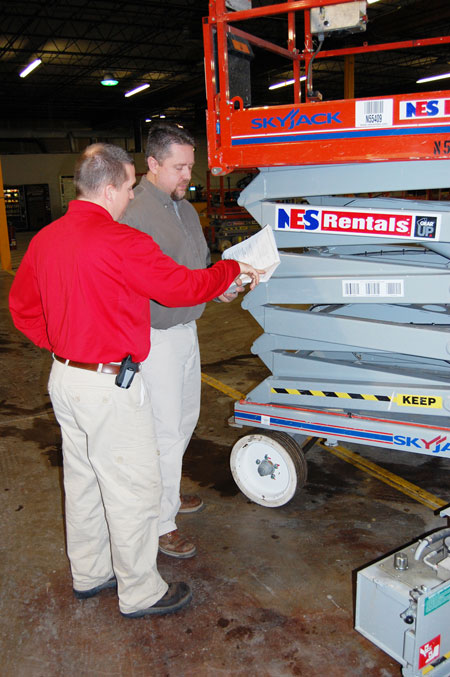Studio Mechanics Union Embraces AWPT Aerial Platform Training
“
“It’s a way of life,” he says, and he comes by this feeling through experience. “A few years ago I had an accident where 800 lbs of truss pieces fell on me. I was hospitalized just under a month and spent almost 2 years in rehab. During that time, I replayed that accident time after time in my head and came to the same conclusion each time — it could have been prevented through proper training. From that moment on, I decided to do everything I could to make our workplace safer.”
A 30-year union member who has worked on films such as the Blues Brothers, Backdraft, Batman, Groundhog Day and many others, de la Mata became the union’s Training & Safety Officer following his recovery and dedicated himself to finding new and better ways to help the members of his union receive the best possible training in areas that affect their jobs. The 500 active members of the union include people in a wide variety of crafts from electricians and carpenters, to grips, props and many others. Each position may require training in a number of areas and de la Mata is working to develop or locate sources for proper training programs in each.

Recently de la Mata attended the Construction Safety Council show in Rosemont, Ill., where Gary Riley of American Work Platform Training (AWPT) presented a 2-hour program on aerial work platform (AWP) safety. AWPT is the North American subsidiary of the International Powered Access Federation (IPAF). During this presentation Riley provided an overview of the proper use, setup and maintenance of AWPs and identified additional hazards that must be considered when AWPs are used. He also invited interested attendees to an eight-hour session the following day that provided supervisors, safety managers and those responsible for training with an in-depth look at AWPs to enable them to know if the aerial lifts being operated are being used and maintained properly.
Upon successful completion of a training program, AWPT issues a PAL Card (Powered Access Licensed-Registration) to all program graduates that denote the type of aerial platform the person has been trained to operate. Knowing who on a site has been trained to operate a particular device could prove invaluable when staffing a project.

de la Mata learned that NES Rentals in nearby Des Plaines, Ill., was an approved AWPT Training Center and contacted them to discuss an ongoing relationship where all members of the Studio Mechanics Union Local 476 that needed aerial platform safety training could receive training and their PAL Card through NES. A few months ago de la Mata and a group of Local 476 members attended their first AWPT training session.
“It was an eight-hour program that included both hands-on and classroom sessions, and it was intense,” said de la Mata. “After years of experience using them, we thought we knew everything about operating a lift, but we learned a lot of things in the AWPT program that we didn’t know. We can take that back to our jobs and help make it a safer place to work. It was well worth the time.”
